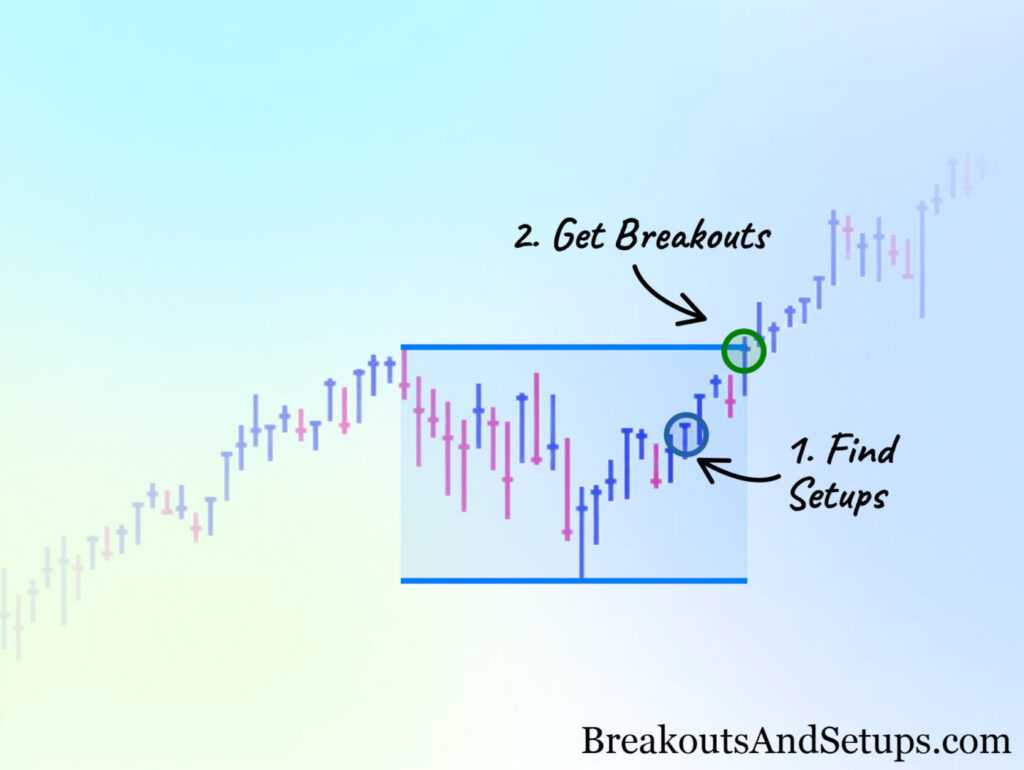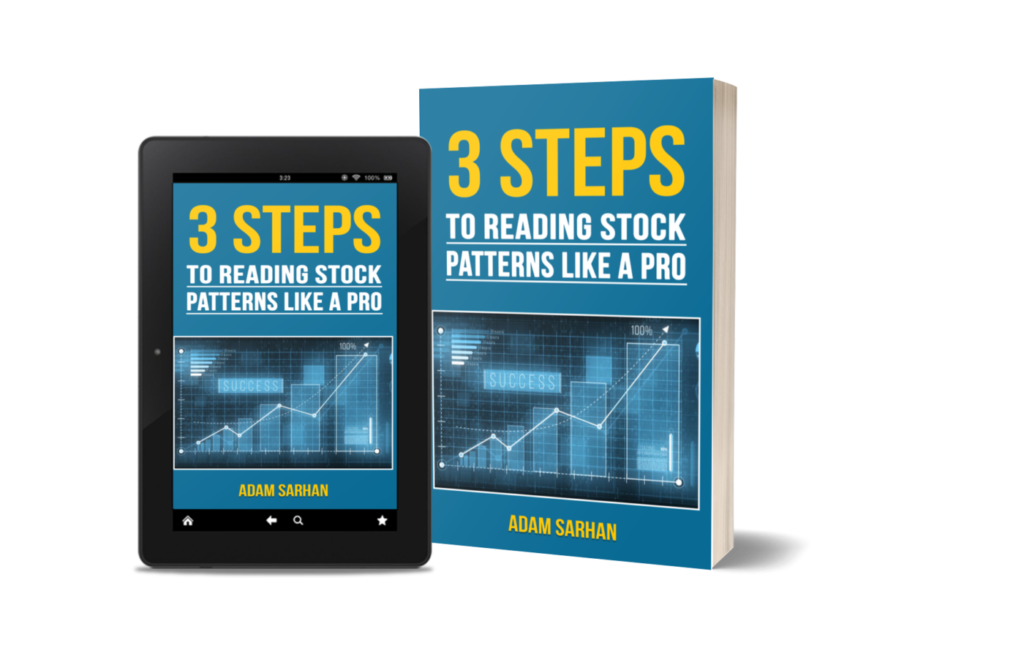Mark Fishman says stocks have personalities, and having success as an A.M.P.D. trader means finding stocks that match your personality — that is, stocks that behave in a way that complements your personal trading strategy.
Read the transcript:
Mark Fishman (00:03):
I think so much of investing, too, is your personality, right? And so it’s kind of funny how, not just with people but with stocks, some stocks you just get along with well, and some stocks you do not get along or they don’t get along with you.
Shawn Vincent (00:22):
You are listening to “Right of the Chart,” the podcast for self-guided, independent traitors. Hey everybody, thanks for joining the podcast today. I am Shawn Vincent. I’m the voice of “Right of the Chart.” Adam Sarhan is the brains behind “Right of the Chart.” He’ll be joining us in spirit again today. We’ll be talking to Mark Fishman, he’s a friend of the show and also a student of Adam Sarhan’s A.M.P.D. trading strategy. In our last conversation that I published last week, we talked a little bit about the differences between a buy-and-hold trading strategy, a more traditional trading strategy, and an active trading strategy like A.M.P.D. It’s different mindsets, and it requires a different approach to looking at the stock market. Mark says something I love here about how different stocks have different personalities and you just get on better with some stocks than with others, and that can inform how you trade it. We’ll talk about that and more today. Here’s my conversation with Mark Fishman, but before we get to all that, remember that in the market the past is not predictive future, no results are typical and there is inherent risk when trading in the market. This podcast is for educational purposes and does not constitute financial advice.
Mark Fishman (01:43):
I guess I’m trying not to be as stubborn sometimes short term. At the same time, some of my biggest regrets are not being patient enough when I have a really good buy point and I did it right, and maybe I should have held the stock much longer than I did. I know that’s a weird dichotomy, but I’ll give you an example. Is $RACE, okay? Ferrari, when that came out as an IPO, what was that six years ago? Whatever it was. I am not kidding. I already told you a sad story about Facebook and me, if you remember, but this is the other really, really sad story is that I bought race perfectly. I think I bought it at like 50 bucks or 40 bucks or something when it was IPO way back and it started to sink and it didn’t act right and I did get out and maybe I just didn’t buy it again, but it’s now at $472. So I don’t even know what to say about that. Maybe in the short term I made the right decision, but I never, sometimes you forget about stocks and I never kept following it and got back in. So sometimes I have regrets about not being patient or not keeping track of stocks even though I get shaken out to just keep following that because you don’t know, even in a year might be the time.
Shawn Vincent (03:01):
And let me comment on that too, because the buy-and-hold side of you and the manager of your personal buy-and-hold portfolio looks at that and says, “what a missed opportunity.” But the A.M.P.D. trader in you, right? The short/midterm trader knows intellectually that those protective stops, that it got triggered, that popped you out of there … that was designed to keep you from losing more than you were willing to. And it’s just that the risk is mitigated differently through your A.M.P.D. portfolio than it is for your buy-and-hold portfolio. And I think what a lot of investors struggle with … and making it work is making that transition between the buy-and-hold mentality and the stop-out. So I think I would just, from what you told me, and going back to Charlie Munger’s comment, that when he played contract bridge, the card game, that even if he lost the hand, if he knew he played the hand correctly the way it would be winning, most of the time, he feels okay with it, right? Yeah. And so you played the hand right for A.M.P.D. in your A.M.P.D.-style portfolio. And even though time had proven that if you’d held onto it, you would’ve done better. It could have just as easily
Mark Fishman (04:34):
Failed
Shawn Vincent (04:34):
And then you would’ve lost way more – and more importantly is you would’ve violated, if you give one equity a pass in your A.M.P.D. portfolio, you violate the risk mitigation for the entire portfolio,
Mark Fishman (04:48):
Right? Yes, I agree. As I get older, I might talk a certain way, but I can’t watch a large position lose 20%, I just can’t 10%, it’s too much. I just don’t do that. So yeah, I guess I have regrets as a human being like, gosh, if I only stayed in whatever, it’s kind of like Annie Duke, that poker player, you’re talking about games. I remember in her book she said you could make a good decision and have a bad result. That’s okay. Versus making a bad decision, getting a good result and then repeating that because you’re going to get burned at some point, right?
Shawn Vincent (05:28):
Back to self-corrective behaviors as important in the market.
Mark Fishman (05:30):
And so I think it shows me, and if I’m going on a tangent, let me know, but it shows me really how hard it is sometimes to find …. there’s only so many amazing stocks over time. I think Adam is in Nvidia, and he stayed with Nvidia because he has such a large profit margin. It’s kind of like me and Microsoft. I can absorb that at this point. I guess I would love to have more of these Microsoft and early entry, Microsoft and Nvidia, but at the same time, you do have to play the short game. And just at my age, I can’t lose that much. My horizon’s shorter than a 25-year-old. I’m not going to risk as much. I’d rather get out and miss something just like you than go against the A.M.P.D. rules and just lose. You just can’t afford to do that.
Shawn Vincent (06:28):
The protective stops were there to protect you from losing more money than you’re willing to in a certain position. But then some of what you’re talking about there gets into the conundrum of, okay, “now that we have profit locked in, how much are we willing to give back?” Right? And so a lot of that has to do with an overall judgment of market conditions. And when it comes to celebrating your mistakes, you learn from them. Or maybe not so much a mistake. I, in July, misread the market conditions as they turned out to be. I thought that that correction would be deeper.
(07:08):
And I had a lot of things that I had relatively new positions in and I thought that if they went much below the 21-day moving average altogether, that they were likely going to go all the way down to the 50. And I thought if they broke the 50 we’re on our way to the 200 and some of them hit the 50, but they found support there. I’m talking about in large. Not everyone acted exactly the same. And even the things that broke the 50, like the $QQQ or anything, they recovered pretty quickly. And of course, if I had known that I had room, I had enough profit where I could have absorbed bigger losses and I wouldn’t have to go through this whole exercise of now immediately trying to get back into positions so that things don’t take off without me. Some of that’s just if I hadn’t already been shaken out a little bit a couple months before with the April turmoil that we had, I’d have had more mature positions and gone into it from a different perspective. But the important thing is, all said and done, I didn’t lose any capital during the correction. I gave up some profits during the correction, but I also locked a lot of things in and now I’m in this rebuilding phase. It’s so easy to look back and say, oh, well if I had done this and this, I’d have weathered it better, but we can just never know. It could very well have been a much deeper correction. Then I would’ve been like, oh, I made great choices. I’m so glad.
Mark Fishman (08:48):
I was in a similar position though because in my active account (not the one we talked about that just sits there) is I also ended up when things started going down and it was time to get defensive, as I told you, I started layering and starting to sell things is I ended up selling a lot of that portfolio. I wish I had profit, but I wasn’t going to risk losing profit. Or if let’s say I bought a stock the day before and the market started to sink, you just have to wait for another day. It’s really hard. And another day might be a year, it could be six months. It’s hard to be patient, but I did the same as you and I’ve been building up, I’m pretty much more heavily invested right now. Matter of fact, as Adam said today, and I think yesterday Nvidia made a move and I actually was shaken out of Nvidia at some point. Just like you, I would love to. I’ve been in and out of Nvidia a few times, not as much as Palantir, which is a very challenging stock to stand. But that’s my point. That’s what I remembered. So I think so much of investing too is your personality, right? And so it’s kind of funny how, not just with people but with stocks, some stocks you just get along with well, and some stocks you do not get along or they don’t get along with you.
(10:20):
Microsoft, just as an example, it’s a pretty easy stock for me to get along with. I can kind of read the charts better. It doesn’t do anything too crazy. If anything, it tests your patients because when you think, okay, Microsoft, everything’s up, let’s go. Sometimes it doesn’t go up. But year in, year out, I think I did an AI search on chat and I think Microsoft has averaged annually something like 29% a year over the last decade and has never lost more than X amount. And so it does give you good returns. I’m just giving you an example of a longer-term thing, and if you look at a stock by $RACE or Costco ($COST), those sometimes it’s easy to see and you need more patients, but like Palantir and Nvidia, SMCI, they are so volatile that it’s hard for me to stay in those things. Even super long-term, like when I get my profits and sometimes I take it with those, I dunno, for me it’s sure …
Shawn Vincent (11:28):
You crank the stop up real tight at a certain point because when it pulls back, it’s going to pull back deeply and you’re just not willing to give all that up.
Mark Fishman (11:36):
I mean you could lose … SMCI … can lose 10% in one day and it’s very hard for me.
Shawn Vincent (11:41):
And then sometimes gain it all back the next day.
Mark Fishman (11:44):
And then you’re like, oh, I should have kept it. And so maybe what I’ve learned is I don’t need additional rules. Maybe I just need to stay away from stocks that I … just are that volatile for me at my age. Maybe when I’m 22, who cares?
Shawn Vincent (11:59):
Yeah, no, I really loved what you said though, that some stocks, I dunno, you’d almost be friends with ’em. They match your style. Then I think if you’re honest with yourself, so this is the main point that you’ve made – if you’re honest with yourself about the behavior, because when we look at a stock chart, what we’re looking at is the behavior of that stock. And if I see a stock that has a nice advanced entry point and it has a shape that I like and I can get in with a stop that is below some level of support and is comfortable with me, then you think I’d go for it. But then I look back on the chart and like, wow, look, it had some big volatility here and there and I know that if that happens in the future, I’m going to get stopped out before it’s mature. And if I just don’t have have capital that’s ready to be invested and I don’t have anything else going, I might go for that spot.
(12:55):
But I’d much rather find some other stock that’s got a nice slowly upward-moving flag that’s respecting a 21-day moving average that has a chance it might break out again and I’ll feel better about. Those are more like the stocks that are friends to me. I have much better because they match my style, and my fears, and my hopes, and my risk tolerance, and I’ve become comfortable with ’em until they prove me wrong. But yeah, I think it’s huge because what someone could say, well, here’s a great entry point. Nvidia is as of today, September 25th, 2024, Nvidia is testing resistance at its downward trend line over recent lower highs. And if it pops up above that, then I think there’s a nice advanced entry point there if you have the risk tolerance for it. I’d rather see it break above a recent high personally, and it’s got a lot of room to grow there. There’s a lot of time to get on that train depending on where you think support is, right? So that’s all. But right now, it’s not my favorite. It’s not behaving the way I want it to yet, and I’ve got other opportunities that fit my, but it doesn’t mean that’s not right for somebody else. It’s all about what that style is.
Shawn Vincent
All right, everybody, thanks for listening through to the end. That’s our podcast. It’s been a crazy week for me. We had our hurricane here, f you hadn’t heard. A lot of folks reached out to make sure we are safe and sound. We are. I appreciate your thoughts. I’m thinking about some friends ends of ours who did not fare as well, suffered some damage, and they’re in our thoughts in prayers. We’ll be back next week watching the market. We’ll talk about it here. Until then, keep your losses small, let your winners fly.





